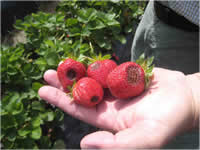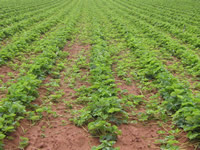Nursery Plant Health
go.ncsu.edu/readext?185296
en Español / em Português
El inglés es el idioma de control de esta página. En la medida en que haya algún conflicto entre la traducción al inglés y la traducción, el inglés prevalece.
Al hacer clic en el enlace de traducción se activa un servicio de traducción gratuito para convertir la página al español. Al igual que con cualquier traducción por Internet, la conversión no es sensible al contexto y puede que no traduzca el texto en su significado original. NC State Extension no garantiza la exactitud del texto traducido. Por favor, tenga en cuenta que algunas aplicaciones y/o servicios pueden no funcionar como se espera cuando se traducen.
Português
Inglês é o idioma de controle desta página. Na medida que haja algum conflito entre o texto original em Inglês e a tradução, o Inglês prevalece.
Ao clicar no link de tradução, um serviço gratuito de tradução será ativado para converter a página para o Português. Como em qualquer tradução pela internet, a conversão não é sensivel ao contexto e pode não ocorrer a tradução para o significado orginal. O serviço de Extensão da Carolina do Norte (NC State Extension) não garante a exatidão do texto traduzido. Por favor, observe que algumas funções ou serviços podem não funcionar como esperado após a tradução.
English
English is the controlling language of this page. To the extent there is any conflict between the English text and the translation, English controls.
Clicking on the translation link activates a free translation service to convert the page to Spanish. As with any Internet translation, the conversion is not context-sensitive and may not translate the text to its original meaning. NC State Extension does not guarantee the accuracy of the translated text. Please note that some applications and/or services may not function as expected when translated.
Collapse ▲
Anthracnose fruit rot is a problem during warm, wet springs.
Anthracnose is the primary plant health threat to North Carolina strawberries. Two types of anthracnose may affect strawberry plantings in North Carolina. Colletotrichum gloeosporioides, anthracnose crown rot or known regionally as “the glo,” is a serious crown rot in North Carolina and the Southeastern United States. Anthracnose crown rot causes sudden wilt and death of apparently healthy plants. Colletotrichum acutatum, anthracnose fruit rot, can be, in some spring seasons (bloom and fruiting), a very serious disease problem, particularly in warm, wet weather. The source of infection for both types of anthracnose is typically related to the nursery plant. The best way to control anthracnose fruit rot is to prevent the introduction of the pathogen into the field by using pathogen-free transplants.

Runnering in the strawberry nursery.
The success of a strawberry plasticulture planting, in large part, depends on the health and vigor of the planting stock. Plants should be true to variety and free of insects, diseases, nematodes and viruses.
The N.C. Strawberry Association keeps a current listing of U.S. and Canadian plant sources of these commonly grown varieties: Chandler, Camarosa and Sweet Charlie.


